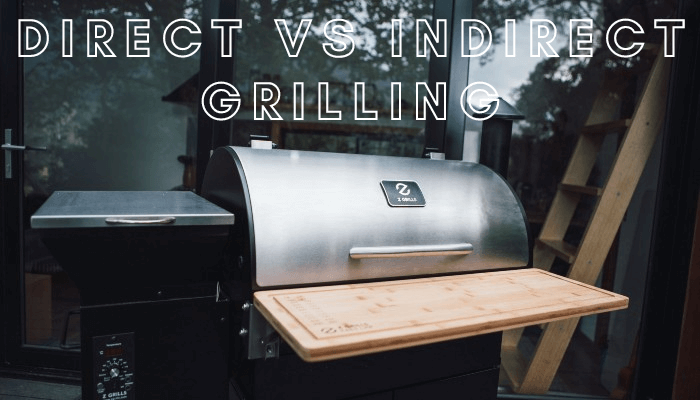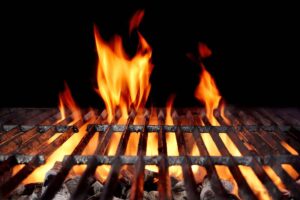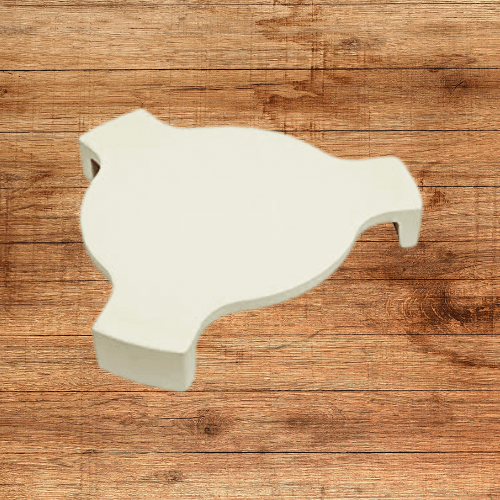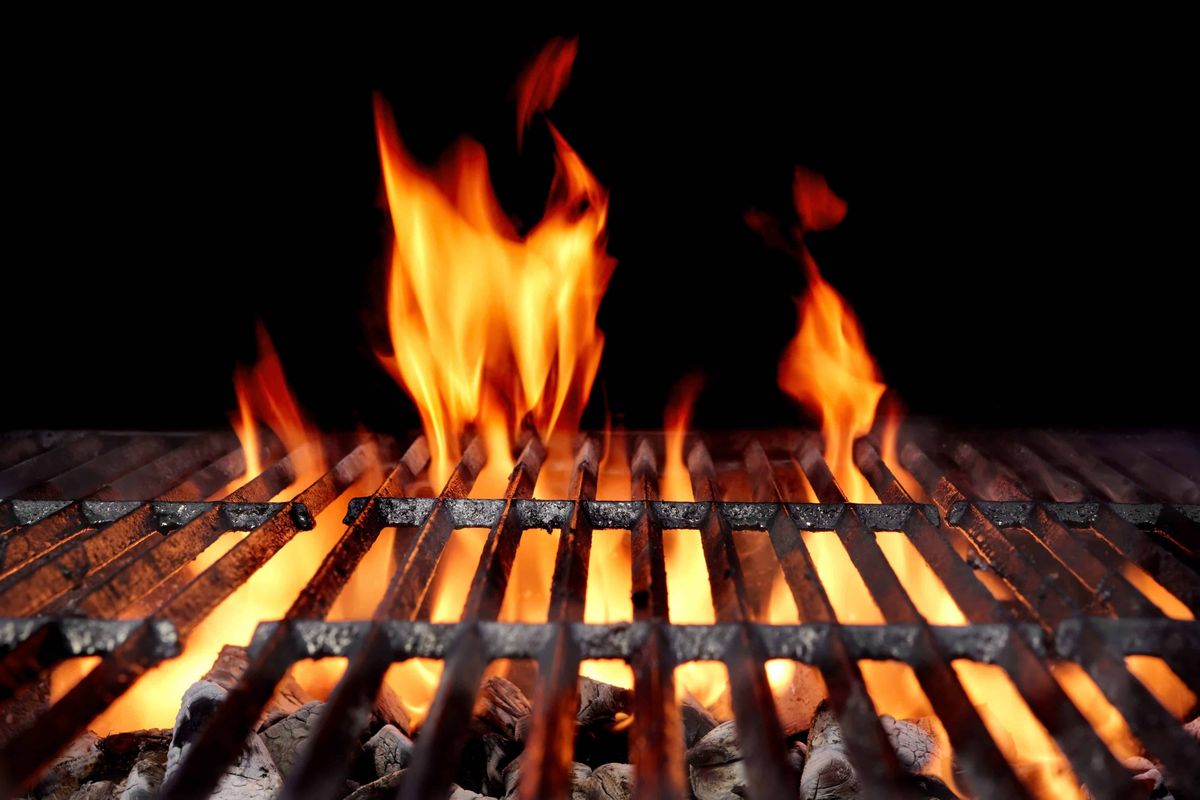
Direct or indirect grilling is a common question, and many recipes will recommend one grilling method over another. How do you know when to use each cooking technique? The easiest way to think about it is direct grilling is when you’re cooking something at high heat, like grilling hot dogs and hamburgers. Indirect grilling is typically done at lower temperatures for longer periods of time. This most common examples of indirect grilling would be reverse searing a steak, or smoking a pork shoulder or brisket. Let’s take a look at the differences between direct and indirect grilling below.

Direct Grilling
Direct grilling is the traditional method that you’re used to when using a Weber Grill or a charcoal grill. It is hot and fast. Direct grilling on a gas grill is exactly what it sounds like: cooking food that is placed directly over the heat and fire. This is typically the best way to cook burgers, steaks, chicken breasts and lamb or pork chops.
Most gas grills can get up to 500°F, and some ceramic grills can even get to 700°F. Grilling at these extreme temperatures isn’t required; however, if you’re looking to for a steakhouse style sear, this is the only way to go to create a nice crust and lock in all of the meat’s juices. More often than not, grills are typically in the 400°F to 500°F degree range. Grilling direct at these temperatures is more than sufficient for your meal. Once the grill is to temperature, the timing of the steak will vary based on how well done you like your meat. Check out our steak temperature chart here.
Indirect Grilling

When indirect grilling, food is directly not placed over an open flame and heat source. For a gas grill, this can be accomplished by turning on the two exterior burners and cooking your meat in the center of the grill. The meat is cooked indirectly from the heat sources on the outside. If you only have a two burner grill, the same method can be accomplished by turning on one burner and cooking your meat to the side.
If you’re indirect grilling on a Big Green Egg, or Kamado Joe, this technique can be accomplished by using the following products: convEGGtors (BGE accessory) or SLŌROLLER (Kamado Joe). There are also other generic branded heat deflectors like this, that are a great option.
When cooking slow and low, it’s recommended to use a drip pan to catch the fat that is rendering off a pork shoulder or a beef roasts. We like to use these disposable aluminum pans. They are relatively cheap, protect the interior of your grill and make for a very easy clean up. Once cooled, you can throw the aluminum pan directly into the trash.
Smoking Meats Slow & Low
Indirect grilling is recommended for slow and low cooks of larger meats like pork shoulder, briskets, turkeys and chickens. While not all cooks will be long (particular for poultry like chicken or turkey), the indirect convection method allows the food to cook without drying out.
Oven Cooking with Kamado Grills
On ceramic grills, indirect cooking can also turn your grill into an oven. After a long pork shoulder cook, we’ll typically throw some cornbread on the Big Green Egg while the meat is resting. Simply whip up a batch of cornbread, and put the ingredients into a 8″x8″ baking pan, and bake at the temperature recommended on the box. Lastly, indirect cooking can be done at high heat. This is the standard method for cooking pizza. Rather than cooking directly over the flame, the shield will distribute the heat evenly cooking the pizza to get wood fired pizza.
The Verdict
The direct grilling method is used when you cook food directly over the heat source, such as a flame or hot coals. This method is best suited for small, thin cuts of meat like burgers, steaks, and vegetables that cook quickly. Direct grilling is also a good choice for high-heat searing to lock in flavor and juices. On the other hand, indirect grilling involves cooking food away from the direct heat source, typically with a drip pan placed between the food and the heat source. This method is ideal for larger cuts of meat, such as roasts or whole chickens, that require longer cooking times and lower heat to prevent burning. Indirect grilling is also a great choice for low-and-slow cooking methods, such as smoking or roasting, as it allows for even heat distribution and better control of the cooking temperature.

